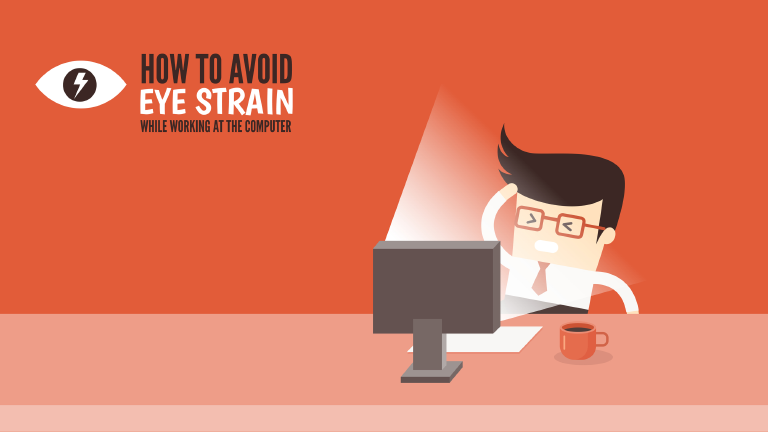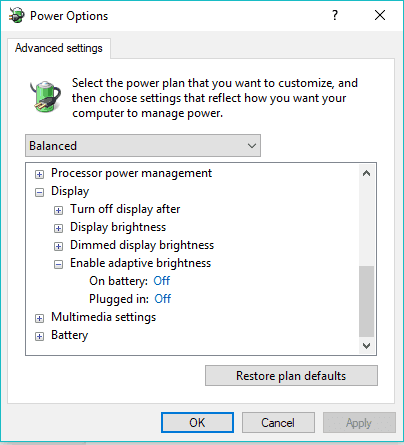All that's happened is your screen saver has kicked in and turned off the display on the monitor, but that's all. The computer is still running. Though most of us do it at work these days, staring at a computer screen is no good for our eye health. In this article, we'll show you how to keep computer screens from ruining your eyesight.
While your laptop obviously works great on-the-go, you can use it at home too. By connecting an external keyboard, mouse, and monitor, a laptop can function like a desktop. But there’s one problem with this: how do you keep the laptop on when it’s closed?

By default, Windows puts your laptop to sleep when you close the lid. This means that even if you don’t want to use your laptop screen as a secondary monitor, you still have to keep it open to keep your computer awake.
Or do you? Thankfully, you can keep your monitor on when the laptop is closed. Here’s how.
How to Keep the Display On When Your Laptop Is Closed
Windows provides a simple toggle to let you keep your laptop screen on when it’s closed. Find it through the following steps:
- In the System Tray (at the bottom-right corner of the screen), find the Battery icon. You may have to click the small arrow to show all icons. Right-click Battery and choose Power Options.
- Alternatively, on Windows 10, you can head to Settings > System > Power & sleep and select Additional power settings from the right menu.
- On the left of the resulting Power Options menu, select Choose what closing the lid does.
- You’ll see options for the power and sleep buttons How to Use Your Windows 10 Power ButtonYou can shut down Windows using the physical button on your computer or the commands on the Start Menu. We explain what these options do and how to tweak them. Read More . Under When I close the lid, change the dropdown box for Plugged in to Do nothing.
- If you like, you can also change the setting for On battery. However, this can cause issues, as we’ll explain in a moment.
- Click Save Changes and you’re good to go.
Now when you close your laptop screen, it will continue to run as normal. This means that you can control it with external devices while the laptop itself is neatly tucked away.
However, remember that when you want to put your laptop to sleep or shut it down, you’ll need to use the commands on the Start Menu once you’ve made this change. You can also use the physical power button on your computer to turn it off.
Beware of Heat When Closing a Laptop Without Sleeping
That’s all you have to do in order to close your laptop without it sleeping. However, changing this option has a consequence that you should know about.
The default shortcut for closing the lid to put your PC to sleep is convenient when you throw your laptop in a bag. But if you forget about that after changing this option, you could accidentally put your laptop in an enclosed space while it’s still on.
In addition to wasting battery power, this will generate a lot of heat and can destroy your laptop over time How to Destroy Your Laptop: 5 Mistakes to Avoid DestructionWondering how to destroy a laptop? These common mistakes will damage your computer over time, so you must beware of them. Read More . Thus, you should consider only changing the lid setting for Plugged in and always plugging in your laptop when you use it at your desk. This is a good combination of convenience and safety.
In recent years, ultrawide monitors have become more readily available – and seen a rise in popularity as a result. There’s just something about the sight of a curved monitor that immerses the user into its sea of pixels, whether they are knocking out a review on the latest gadget or sinking hours into their favorite game. But if you’re only using a single window at a time, you aren’t taking full advantage of all that real estate.
If you split your computer screen monitor, you can run multiple applications, view research in one half of the screen and your word document in another, or display various status displays across your entire monitor.
Windows 10 includes a number of default features that make splitting the screen as easy as dragging the display, but more complex control can be achieved with third party applications.
This article will explore the various options available to you to split one monitor and let you take full advantage of your screen real estate.
Split Screen with Windows 10 Snap Assist
Windows 10 has a feature called “Snap Assist” that allows you to drag and drop a window to the part of the screen you want to snap it to. Make sure this feature is enabled first.
- Click Start and open Settings.
- Click System and select the Multitasking tab.There is a slider called Snap Windows. Make sure it is set to On.
You also have the option to choose certain options, such as:

- When I snap a window, automatically size it to fill available space.
- When I snap a window, show what I can snap next to it.
- When I resize a snapped window, simultaneously resize any adjacent snapped window.
Once enabled, all you have to do is click and drag a window to one side of the screen. Dragging it to the left of the screen will cause it to fill the left-side of the screen to the halfway point, while dragging it to the right will do the opposite.
If you drag a window to any of the four corners of the screen, the window will snap to fill a quadrant of the screen. Dragging it to the top of the screen will make the window fill the entire screen. Once you have snapped a window into place, you can grab the dividing line between any two windows and adjust the size of each one.
Two windows can be displayed split screen, or four can be displayed in a quadrant set up. One window can also be set to fill half the screen while two others fill the top and bottom of the other half of the screen. However, you can’t snap three windows in a side-by-side-by-side layout, not without the help of a third party application.
Split Screen on Windows XP/7/8
If you have an older version of Windows, you might not have access to the same built-in tools as Windows 10, and many of the freeware options won’t work. Never fear, though: there are still ways to split the screen.
In Windows 7, open two applications. Once the two apps are open, right-click on the taskbar and select “Show windows side by side.” Voila: you’ll have two windows open simultaneously. It’s as simple as that. And if you take a quick pick at the screenshot below, you’ll see that you can also stack the windows on top of one another.
Windows 7 was the first iteration of the Windows OS to support the Snap Assist feature. It worked similarly to how Windows 10 currently implements the feature. Just drag an open window to either the left or the right side of the screen in the center and let it go. It will “snap” into place.
Windows 8 is a little more difficult, but similar in function. Windows 8 was designed with touchscreen devices in mind, but it can still be controlled via mouse. Open two apps, and place one in full-screen mode. If you use a touchscreen, swipe in from the left side of the screen until the app is docked.
If you have a mouse, place it in the top left corner, click and hold the app, and drag it into place on screen. A dividing line will appear in the center of the screen when both apps are in place. You can adjust this line to change the amount of space each app takes up.
Split Screen with Freeware
If the built-in Windows 10 applications don’t give you the control and utility you need, there are freeware applications you can use that grant access to more advanced features. A few of these include WindowsGrid, GridMove, and AltDrag. The first two freeware applications we covered more extensively in a similar post on this topic that explores how each one works.
The downside to freeware applications is that the developers make nothing or next to nothing for their development, so support for these programs can end abruptly. For prolonged support for screen-splitting applications, consider a paid program that serves a similar purpose.
T-6 texan ii microsoft flight simulator. Serial L-07.The virtual cockpit is also repainted to look like the grey cockpit of theRNLAF PC-7.To be used with the payware IRIS Pilatus PC-9/A. Buy it here:limited distributionAdded:23rd December 2015, 12:39:16Downloads:235Author:Marcel RitzemaSize:32042kbCategory:SkyWest Bombardier CRJ200 (N465SW)Images related to this file:.File Description:Repaint of the SkyWest Bombardier CRJ200 (N465SW).
Paid Software Options
Paid split screen software gives even more features than freeware and is more reliable in that you can trust support will continue as long as people continue to purchase the software. These programs also offer customer support to help you navigate any technical difficulties you might run into.
Here are a few of the best options.
Divvy is a window management tool based around the idea of “divvying up” your windows into different sections. For just $14, the software is well within most budgets and allows users to split their screen into a variety of setups.
While it operates similarly to Windows Snap Assist, users have more options in how they arrange their screens. Divvy makes it possible for users to create their own shortcuts to resize and reshape their screen however they want.
AquaSnap is similar to Divvy, except that it offers the software for free for personal use. The “Pro” version is $18. The butterfly effect imago rapidshare free. While less powerful than Divvy, it’s also more user-friendly. AquaSnap doesn’t have as many features or as much control, but the “Pro” version gives access to keyboard, mouse, and other types of shortcuts that make resizing your screen as easy as pressing a few buttons.
You don’t need an ultrawide monitor to make use of any of these tools. Splitting the screen can be useful in any situation where you need to view multiple sources of information at once, but high-resolution displays are where screen-splits really shine through.